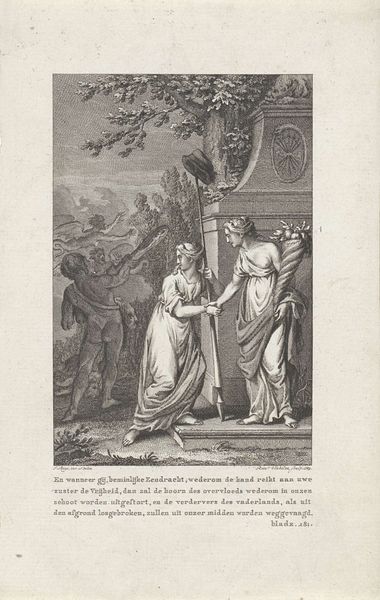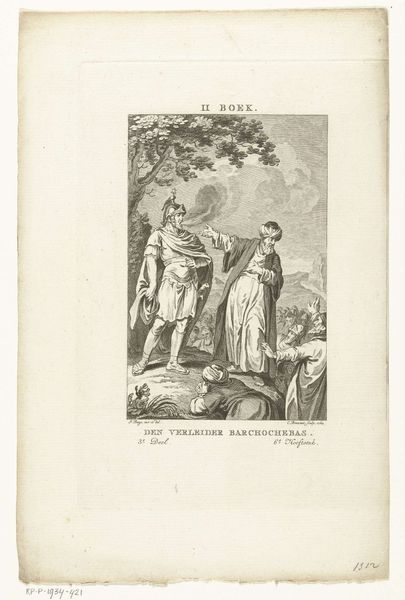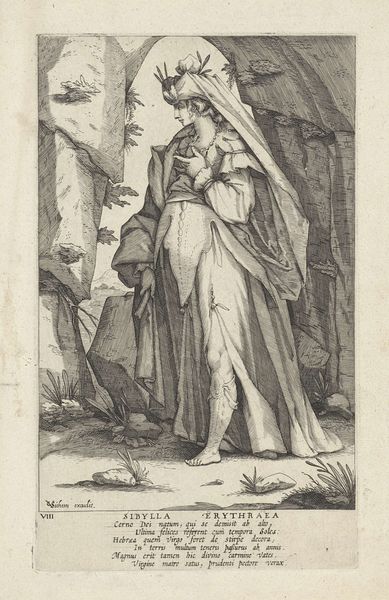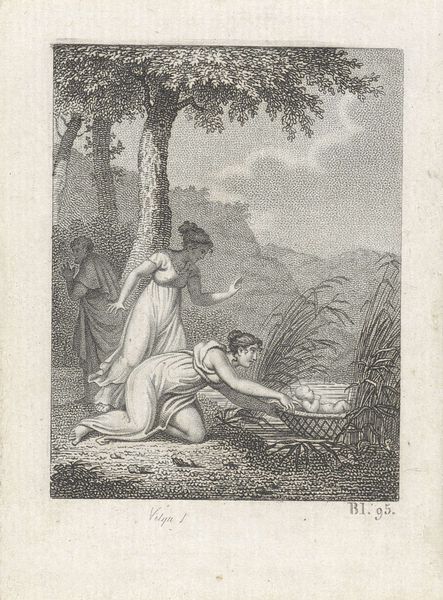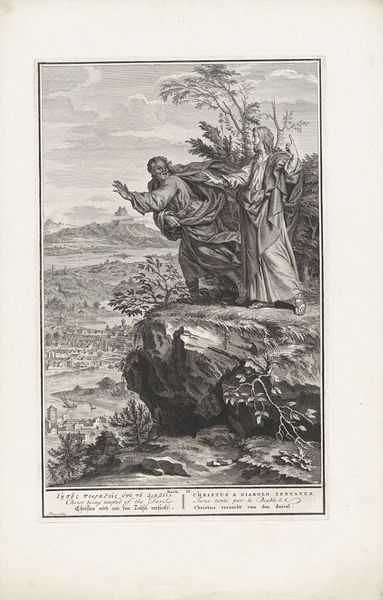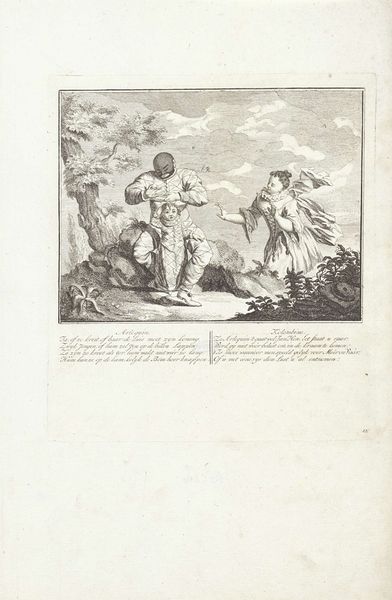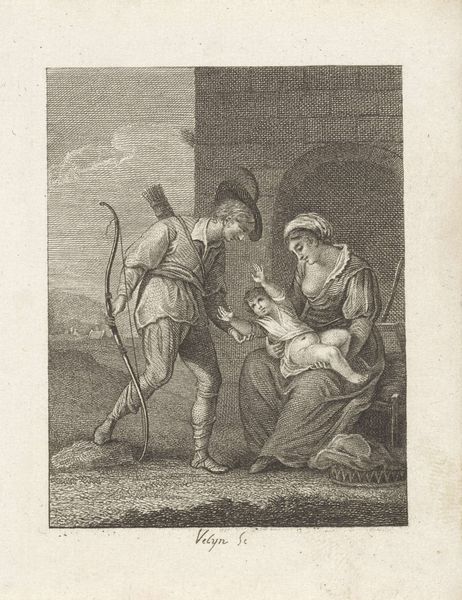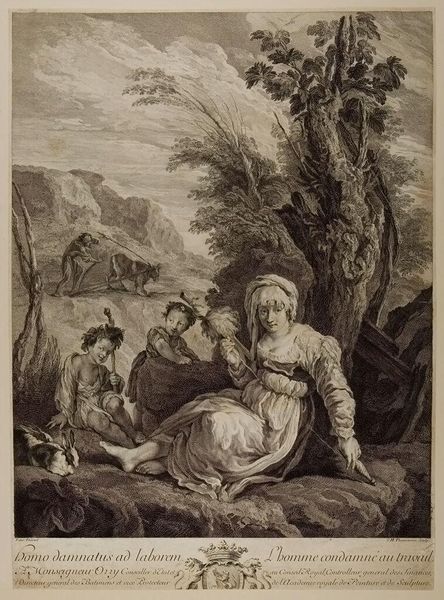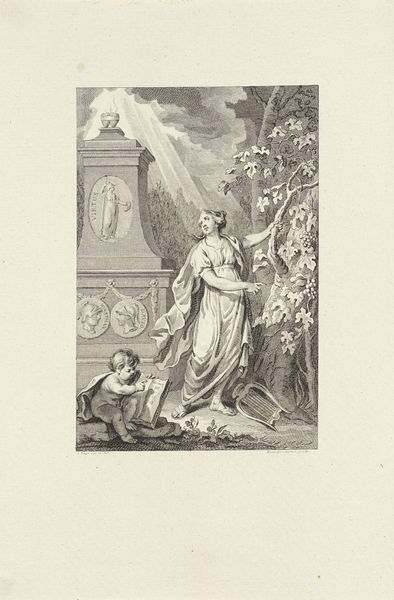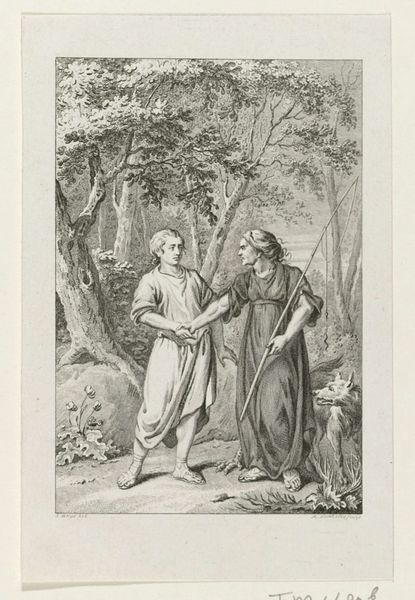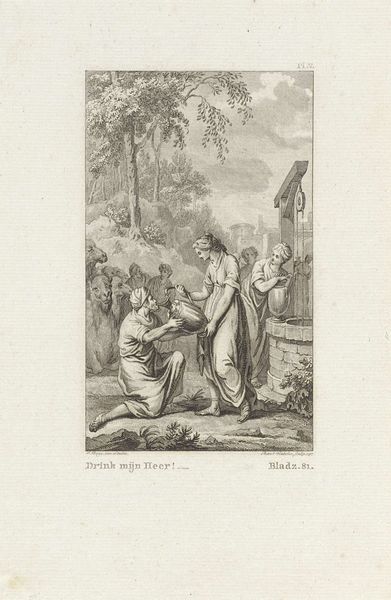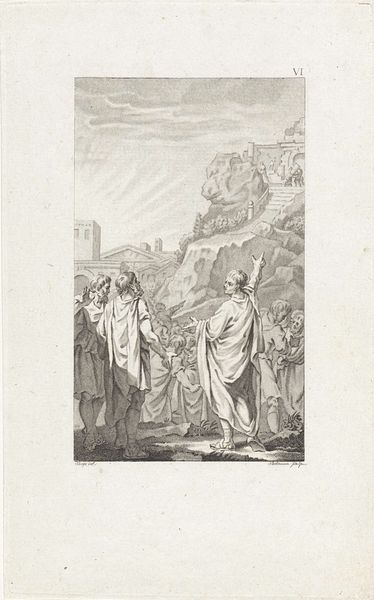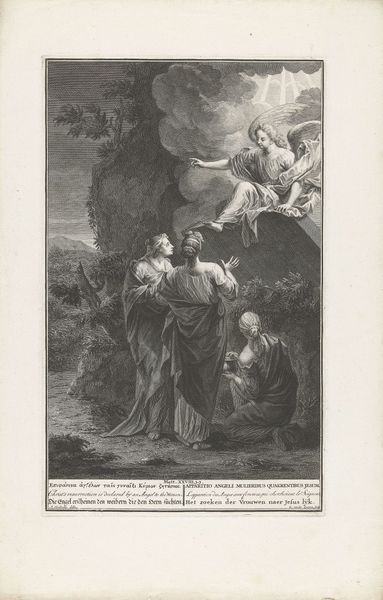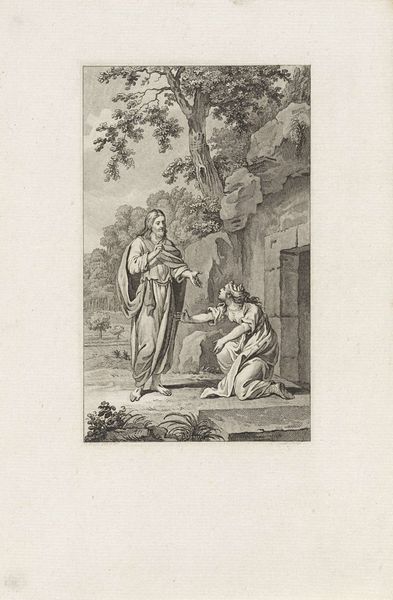
print, engraving
#
neoclacissism
# print
#
old engraving style
#
landscape
#
figuration
#
romanticism
#
history-painting
#
engraving
Dimensions: height 244 mm, width 163 mm
Copyright: Rijks Museum: Open Domain
Editor: We’re looking at "Night View with Three Figures and a Baby in a Landscape," an engraving made around 1807 by Reinier Vinkeles, currently held at the Rijksmuseum. It feels like a scene from a play, very theatrical, with the classical figures posed dramatically in the moonlight. What strikes you about it? Curator: It's interesting to see this piece framed within the context of Neoclassicism. While formally referencing classical aesthetics, we see a distinctly Romantic sensibility emerging in the emotional intensity and the focus on the sublime within the landscape. Consider how political and philosophical currents of the time influenced Vinkeles, especially regarding public morality. Does the composition suggest a didactic purpose, a subtle critique, or something else entirely? Editor: I hadn't thought about a potential critique, but seeing it now I'm wondering if the family in a state of emergency by night isn't there to say something more than the pretty picture suggests at first glance. What was the public role of art during this period in the Netherlands? Curator: Engravings such as these were often widely distributed, offering access to imagery for a broad audience beyond the elite. In the politically turbulent years following the Batavian Republic, the arts served as a subtle battleground of ideas. History paintings especially played a part in shaping, solidifying and perpetuating what was then understood about history. We might ask whether Vinkeles uses this "history painting" in the classical style to project a moral lesson, a vision of domesticity, or a reflection on the instability of life. The tomb would emphasize human finitude and a need for community. Editor: It’s fascinating to consider how something that appears to be just a serene night scene can be interpreted within this historical and cultural context. I wouldn't have thought about it being a call for more social stability. Curator: Exactly! The visual language may seem to point at a generalized aesthetic, but it may convey quite explicit socio-political views when looked at in context. Editor: It makes me realize how crucial it is to understand the socio-political environment and cultural milieu of the period. Thank you!
Comments
No comments
Be the first to comment and join the conversation on the ultimate creative platform.
